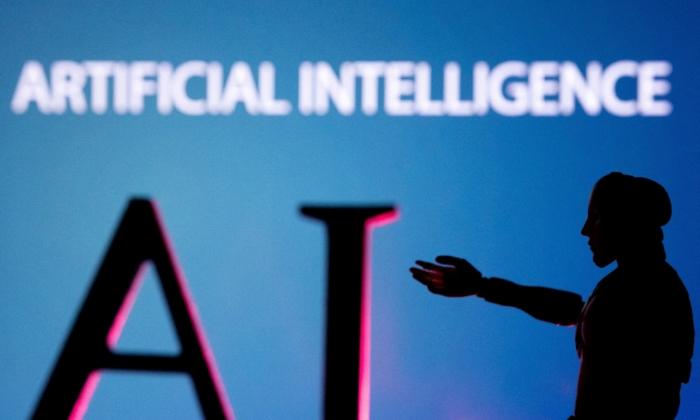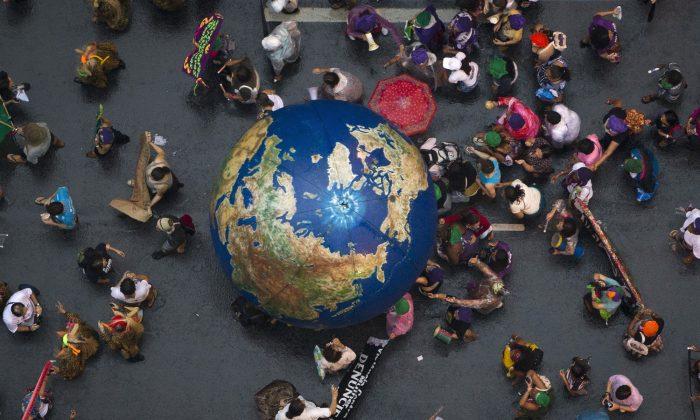News Analysis
The future of humanity is becoming ever less human. The astounding capabilities of ChatGPT and other forms of artificial intelligence have triggered fears about the coming age of machines leaving little place for human creativity or employment. Even the architects of this brave new world are sounding the alarm. Sam Altman, chairman and CEO of OpenAI, which developed ChatGPT,
recently warned that artificial intelligence poses an ”existential risk” to humanity and warned Congress that artificial intelligence “can go quite wrong.”
While history is littered with apocalyptic predictions, the new alarms are different because they are taking place amid broad cultural forces that suggest human beings have lost faith in themselves and connections with humanity in general.
The new worldview might best be described as anti-humanism. This notion rejects the idea that human beings are perennially ingenious, socially connected creatures capable of wondrous creations—religious scripture, the plays of Shakespeare, the music of Beethoven, the science of Einstein. Instead, it casts people, society, and human life itself as a problem. Instead of seeing society as a tool to help people to build and flourish, it stresses the need to limit the damage humanity might do.
Many climate change activists, for example, argue that humanity’s extinction could be a net plus for planet earth. State-sanctioned euthanasia, which just a few years ago was considered a radical assault on the sanctity of life, is becoming common practice in many Western countries—available not just to the terminally ill but those who are just tired of living.
All this is taking place as social science research reveals that people are increasingly cutting themselves off from one another. The traditional pillars of community and connection—family, friends, children, church, neighborhood—have been withering, fostering an everyday existence defined for many people by loneliness. The larger notion of human beings as constituting a larger, collective project with some sense of common goal is being replaced by a solipsistic individualism, which negates the classical liberal values of self-determination and personal freedoms in a worldview that nullifies the societies they built.
These trends, which have been studied largely in isolation, could be amplified by the ascendance of artificial intelligence. As humanity wrestles with powerful new technologies, a growing body of research suggests that a more fundamental question may be whether human beings are willing to shape their own legacy in the new world order.
God as Gaia
Anti-humanism has a long history—it can be traced back at least to Thomas Malthus, who warned in 1789 that overpopulation was the greatest threat to human prosperity. Although the British economist and cleric was not hostile to humanity and his dark predictions never came true, his claim that people are the problem has provided the
cri de coeur for the modern environmental movement. In 1968, the biologist
Paul Ehrlich’s best-seller “The Population Bomb,” which expressed horror at the proliferation of people, prophesied that continued surges in population would lead to mass starvation. Ehrlich and
his acolytes urged extreme measures to stave off disaster, including adding
sterilant to the water supply to prevent human reproduction.
These views have not gone away. The big business-funded
Club of Rome report, issued in 1972, embraced an agenda of austerity and retrenchment to stave off population-driven mass starvation and social chaos. Humanity’s ancient effort to create safety and comfort—its commitment to progress and prosperity—was cast as a lethal threat.
Others were less politic in their embrace of anti-human memes. In 1991, the oceanographer
Jacques Cousteau said that “in order to stabilize world populations, we must eliminate 350,000 people per day.” Today, this mindset informs many climate change activists, who as the writer
Austin Williams has noted, believe human beings represent “the biggest problem on the planet” as opposed to the “creators of a better future.” More than 11,000 scientists signed an emergency declaration in 2019 that said having fewer people should be
a priority.
In a May New Yorker article about “The Earth Transformed,” a new book by Oxford University professor Peter Frankopan, Harvard professor Jill Lepore notes: “In his not at all cheerful conclusion, looking to a possibly not too distant future in which humans fail to address climate change and become extinct, Frankopan writes, ‘Our loss will be the gain of other animals and plants.’” Lepore then quips, “An upside!”
Manifestos such as Frankopan’s, whose writing on the history of climate change is quite nuanced, reflect how the climate agenda tends toward apocalypticism, and a highly toxic view of humanity. Already
more than half of young people around the world believe the planet is doomed. Although few prioritize climate as their main concern, concerns about warming underpins a profoundly anti-human agenda based on the impoverishment of much of the population. Many corporate interests, as well as their allies among green activists, have embraced the notion of “degrowth,” embracing a weird form of
autarkic feudalism in which people live in small places,
eat a meager diet, and surrender any chance of upward mobility. The “tiny house” movement is a small example. It is hard to overstate what a radical departure this is from long-held beliefs tying progress to rising standards of living, much less creating offspring.
Such an approach seems to require a quasi-religious commitment which, if it does not claim justification from God, acts
as the right hand of Gaia and of supposedly sanctified science. Two environmentalists, writing in
Time magazine this April, argued that Earth Day should be designated a “religious holiday” just like Easter and Passover.
The Fading Family
Unlike traditional religious holidays, sacralized Earth Day festivities likely will not celebrate the family or human fecundity. Around the world, the ties between parents, children, and extended family are clearly weakening and thus undermining the bonds that have held human society together from the earliest times.
To be sure, many children are being brought up without two parents.
The number of children living in single parent households has more than doubled in the last 50 years. In the United States,
the rate of single parenthood has grown from 10 percent in 1960 to over 40 percent today.
Rather than a nation of families, the United States is becoming a collection of autonomous human beings and childless households. The impacts of a weaker family, as Brookings Institution scholar Richard Reeves and others have noted, are felt most among poorer people, and particularly their offspring. “This is probably the best documented fact in sociology in America that no one wants to admit,” observed
demographer Mary Eberstadt.
The links between
family dysfunction and crime have been clear since at least the 1970s. This breakdown has worsened as city leaders in San Francisco, Los Angeles, Seattle, Portland, New York, and other urban centers now accept homelessness, open drug markets, and petty crime. This can be viewed as another aspect of anti-humanism, rejecting the notion that people are capable of productive and fulfilling lives. Instead of seeing people as members of a community with obligations to one another, it reflects a kind of live-and-let-die individualism that leads to isolation, despair, and anger.
The Friendless American
Family decline reflects just one aspect of an increasingly dehumanized social order. The U.S. Census Bureau
has found that 28 percent of American households had just one person in 2020. In 1940, this number was just 8 percent. In a recent survey conducted by
Cigna, researchers found that almost 80 percent of adults from the ages of 18 to 24 reported feeling lonely. In 2018, even before the start of the COVID-19 pandemic,
one study showed that 54 percent of Americans felt like no one in their life knew them well.
The “atomization” of America, first examined 20 years ago by Robert Putnam in books such as “Bowling Alone,” has been simply “speeding out in the wrong direction,” warns journalist Jennifer Senior.
As the pandemic wound down in the spring of 2022 and many were looking to resume their lives as normally as possible, a
survey of American adults revealed that many people found it harder to form relationships now, and one-fourth of adults felt anxious about socializing. The biggest source of anxiety, shared by 29 percent of respondents, was “not knowing what to say or how to interact.” As social commentator
Arthur Brooks notes, “Many of us have simply forgotten how to be friends.”
But it’s young people who bear the brunt of the loneliness wave. Data from the American Enterprise Institute’s
Survey on Community and Society indicate that younger Americans are, in fact, considerably more lonely and isolated than older Americans. For instance, 44 percent of 18 to 29-year-olds report feeling completely alone at least sometimes, compared with just 19 percent of 60 to 70-year-olds. Perhaps most troubling, 22 percent of younger Americans stated that they “rarely” or “never” have someone they can turn to when in need. For older Americans, this number was just 5 percent.
So, what replaces human connections? The solution is increasingly expressed as
self-love—the notion that the individual, however flawed, needs to be celebrated above all other human connections. According to
one recent survey, 44 percent of people believe self-love is an essential aspect of mental health. For some, like
pop singer Lizzo, self-love means accepting even traits such as
obesity, which are clear threats to basic health.
In this tech-dominant future, even the most pleasurable direct human contact is being supplanted by artificial stimulus. Many younger people are falling into what researchers have characterized as a “
sex recession.” There has been a significant rise in
artificial sex and
numerous reports have found that pornography consumption can negatively impact marital intimacy and reduce relationship satisfaction.
Younger generations are having sex less often and experiencing far more relationship instability, leading to fewer marriages and more atomization. In Japan, the harbinger of modern Asian demographics, roughly a third of men enter their 30s as
virgins and a quarter of men over 50 never marry. Nearly a
third of Japanese in their 30s have never had sex.
Psychologist Maytal Eyal, writing in
Time, quotes Rep. Alexandria Ocasio-Cortez suggesting that that loving yourself is “the one foundation of everything.” She also quotes Nicole LaPera, a clinical psychologist with 6.4 million followers, who claims “Self-love is our natural state,” citing Miley Cyrus, whose recent hit “Flowers” proclaims, “I can love me better than you can.”
Life, Death, and Changing Attitudes
As reflected in “self-love,” anti-humanism rests on a
belief system that substitutes the sanctity of human life with a new ideology centered on the autonomous individual’s wants and desires. This extends to changing views on the most basic events of human existence, birth, and death.
Attitudes towards euthanasia are increasingly permissive and expansive. Today a majority of Americans (54 percent),
according to Gallup, think that doctor-assisted suicide is morally acceptable.
Ten states now provide euthanasia. Several others, including Massachusetts and Vermont, also want to expand the use of “end of life” procedures.
The United States is behind the curve on this issue. In
Canada, euthanasia is being made available even to those not terminally ill. Some apply to be killed due to
homelessness or
depression; since the new euthanasia law went into effect in 2016, the numbers using it
have grown ten-fold.
Canadian medical professionals have been reported to urge terminally ill patients to end their lives earlier, in part to defray hospital expenses. There are even government plans to consider allowing assisted suicide for minors
without parental consent.
These trends can be seen as well in some European nations, such as
Switzerland, where people not terminally ill can orchestrate their own extermination. In
Spain, one convicted murderer opted for suicide even before sentencing.
Belgium allowed the assisted suicide of a 23-year-old woman with depression, something that has sparked considerable controversy. In
Japan, it is widely discussed whether that rapidly aging population should institute euthanasia for the elderly, even those who are not sick or dying. Last year the country experienced
twice as many deaths as births.
The shifts here and abroad reveal a diminishing value placed on human life. A
Connecticut civil rights lawyer, a former strong supporter of liberalized euthanasia laws, reports how physicians advocated assisted suicide for patients with disabilities, even those able to live longer and thrive.
Similar attitudes toward life define the ever more contentious abortion debate. When
Bill Clinton ran for president in 1992, his platform was that abortion should be “safe, legal, and rare.” Today, the nation’s most prominent
abortion advocates—like their opposite number in the pro-life movement—leave no room for compromise. Pro-choice leaders often view abortion as an unchallengeable “human right.” Just as the idea of limiting abortions for rape and incest, and placing very strict time limits, seems extreme to most Americans, the alternative view that has taken hold is that abortion idea is no longer something to be regretted, but celebrated. And this attitude has only intensified after the overturning of Roe v. Wade.
The Fading of Religion
The growing atomization of society has accompanied the historic decline of organized religion. Survey data show that two groups saw their rate of unhappiness rise more significantly than the others: single people, and those who did not regularly attend a religious service. The fading of religion, particularly among the young, intensifies isolation;
the most recent AEI survey reveals, in contrast, that
being faithful and part of a religious community deeply impacts feels of connectedness and isolation.
The decline of religion is a fundamental reality in most Western countries. In
Europe, over 50 percent of those under age 40 do not identify with any religion. America, once considered an exception to the global secularizing trend, is also now rapidly “
unchurching.” Younger Americans may still embrace of the notion of
spiritual power but are leaving religious institutions at a rate
four times that of their counterparts three decades ago. Almost 40 percent of people ages 18–29 have no religious affiliation.
The decline in faith among America’s youngest cohorts certainly threatens the trajectory of family formation; the fertility of
women attending at least weekly religious services is about half-again higher than that of the secular.
Globally, research shows that the higher the level of faith, the higher a country’s fertility will be, suggesting one way how traditional religion is at odds with the anti-human perspective of many in the climate movement.
A strong commitment to faith also correlates with community connectivity and engagement.
For instance, just 10 percent of the religiously observant say they have no close friends; the number nearly doubles for those who have no faith.
This pattern extends to the younger generation. Religious younger Americans are more than
twice as likely to do community work as their nonreligious Gen Z counterparts.
Data from a nationally representative survey of nearly 2,000 young adults ages 18–25 coordinated by
Neighborly Faith reveals that half of religious Gen Zers report volunteering in the community often or very often, compared to 30 percent of slightly religious Gen Zers and just 21 percent of non-religious Gen Zers. Despite
narratives of insularity and social disconnect among religious Americans, it is primarily the religiously detached who are isolated and not connecting to others.
Tech and De-Humanization
Having moved away from family, community, and friendships, people increasingly seek salvation through technology—with some highly negative results. By empowering individuals, PCs, smart phones, and the rest have seemed to reduce the need for human connection. Increasingly, people are coming to see each other the same way machines see us—as data points to be fed into algorithms. “Science per se,” the late British chief Rabbi Jonathan Sacks said, “has no space for empathy or fellow feeling.”
With the growth of
artificial intelligence, the prospect of
replacing humans by machines seems increasingly imminent. In Japan, where labor shortages are particularly intense,
robots are being developed to care for their aging population and
provide companionship for the increasingly rare young, as in Kazuo Ishiguro’s dystopian science fiction novel “
Klara and the Sun.” Increasingly, even
sex work could conceivably be dominated by artificial life forms.
As people hand over even their most intimate relations to machines, the designers of the new anti-human reality espouse the notion that, over time, most humans will be economically redundant and unnecessary. Researcher
Gregory Ferenstein, who interviewed 147 tech company founders, found that most believe an “increasingly greater share of economic wealth will be generated by a smaller slice of very talented or original people. Everyone else will come to subsist on some combination of part-time entrepreneurial ‘gig work’ and government aid.”
Rather than see most humans as assets to society and the economy, many tech leaders, including AI pioneers like
Sam Altman, envision offering the masses what Karl Marx would call “a proletarian alms bag,” a guaranteed income leaving them unstressed but marginally engaged in how society operates. This view is endorsed by
many other tech oligarchs—
Mark Zuckerberg,
Elon Musk,
Travis Kalanick (former head of Uber), as well as Altman.
Yet recent experience suggests clear dangers in what virtual reality guru Rony Abovitz calls “computational autocracy.” When you look at Americans born after 1995,” notes New York University professor
Jonathan Haidt, “what you find is that they have extraordinarily high rates of anxiety, depression, self-harm, suicide, and fragility.”
Since 2010 , he notes, teenage girls have seen their rates of depression rise by 145 percent, while that for men has jumped 161 percent. Similar patterns, including hospitalizations for suicide, have risen across Western society.
The
disturbing work of Jean Twenge, a professor of psychology at San Diego State University, has revealed in detail the depressive symptoms among students K-12 over the past two decades. Today, half of U.S. students (50 percent) state that “they can’t do anything right” and that they “do not enjoy life” (49 percent). Sadly, 44 percent assert that their “life is not useful,” and this
matches many attitudes on college and university campuses around the United States.
According to Rebecca Rialon Berry, a professor in the Department of Child and Adolescent Psychiatry at New York University, “the intense sounds, colors and rapid movement of digital content can make it much more immersive and entrancing than the real world—and therefore much more difficult to disengage from.”
Rise of a Post-Human World Order
For some, technology could also provide, as religion once did, the mechanism to reinvent the human race.
Masayoshi Son, founder of the influential Softbank venture fund, recently suggested that artificial intelligence would lay the foundation for the creation of the “superhuman.” Scientists for a half century have harbored similar dreams and some no doubt welcome
the Biden administration’s support for a vast project “to write circuitry for cells and predictably program biology in the same way in which we write software and program computers.” But cautionary tales about trying to create “the better human” are abundant: Consider the
scientific promoters of early 20th century American eugenics as well as the examples of
the Soviet Union and
Nazi Germany.
The ultimate goal of the tech elite increasingly will be to meld people with machines. “Transhumanism” is based on the idea, espoused by former Google chief scientist
Ray Kurzweil, that we can “transcend the limitations of our biological bodies and brains,” gaining control of “our fates” as well as our mortality.
The new tech religion treats mortality not as a normal part of life, but as a “bug” to be corrected by technology.
Although it sounds like a cult, transhumanism has gained
devotees from Silicon Valley including Sergei Brin, Larry Page, and Ray Kurzweil (of Google), to Peter Thiel and AI guru Sam Altman, whose Y Combinator is developing a technology for
uploading one’s brain and preserving it digitally. The aim is to “develop and promote the realization of
a Godhead based on Artificial Intelligence.”
This new religion is a step toward creating a scientifically ordered society detached from family, religion, and the broad sense of community. Philosopher
Yuval Noah Harari envisions a future where “a small and privileged elite of upgraded humans” will use genetic engineering to cement the superior status of their offspring—a small, God-like caste of what he calls Homo deus who can lord over the less cognitively gifted Homo sapiens.
“You want to know how super-intelligent cyborgs might treat ordinary flesh-and-blood humans?” Harari asks. “Better start by investigating how humans treat their less intelligent animal cousins.”
Views expressed in this article are opinions of the author and do not necessarily reflect the views of The Epoch Times.







